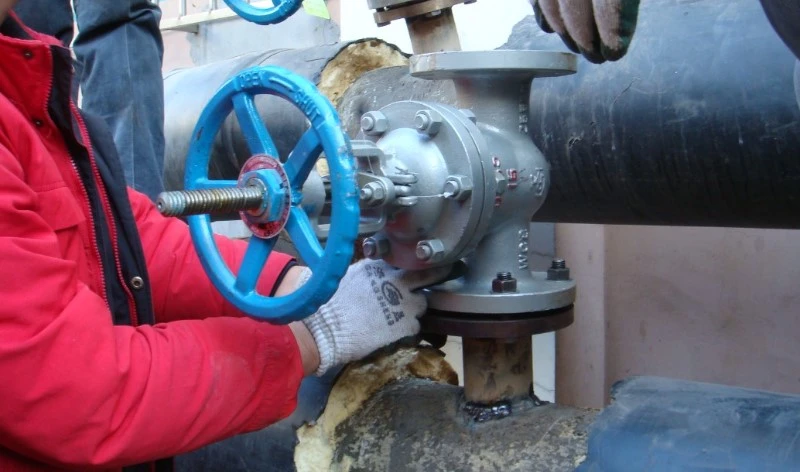There are many types and specifications for common valves. How to select the right valve? There are many factors, including the purpose of valve, the characteristics of medium, the maximum working pressure and temperature, flow rate and nominal diameter of pipe.
Before installation, people must check valve models and specifications carefully, to make sure the valve meet design requirements and is workable in the working condition. If necessary, the valve shall be done with hydraulic test. In addition, pls check whether the packing is intact and bolts has sufficient adjusting margin, whether stem and disc are flexible, and no jamming or skewing. Valve disc sealing surface must be sealed completely. Unqualified valves cannot be installed and should be stacked or marked separately.
Precautions when installing the valve,
1. Rising stem valve can not be directly buried, to prevent the stem from being rusted. It can only be installed in the covered trench for easy operation, inspection, disassembly and maintenance.
2. When moving valve, it is not allowed to throw to avoid any damage or deformation. When placing, carbon steel valves shall be separated from stainless steel and non-ferrous metal valves. When hoisting, the steel wire rope should be tied to the connecting flange between body and cover. Do not tie it to the hand wheel or stem to prevent damages on them.
3. Valve shall be installed in free area and doesn't interfere with equipments and piping. The installation height shall be convenient for operation and maintenance. Generally, the valve handle shall be 1-1.2m from ground. For valves that will be used frequently, and must be installed 1.8m higher from the operating surface, a fixed operating platform shall be provided. When it must be installed above or below the operating surface, the extension stem is needed or the valve stem is installed horizontally. At the same time, a handwheel with a transmission or a remote operating device shall be provided. The angle between the axis of the valve transmission won't exceed 30 degrees, and the joint is flexible during operation with accurate indication. For valves with thermal displacement, the transmission will have compensation measures.
4. In horizontal piping, it is the best to install the valve vertically upwards or the valve stem in the upper semicircle, but do not install valve stem downward. The valve stem and handwheel on the vertical piping must be installed in the direction of the operating circuit. When conditions permit, the valve should be installed as centrally as possible for operation. Valves on towers above 4m above the ground should not be placed outside the platform for the ease of installation and operation.
5. For valve with direction,it shall be installed according to the flow direction of pipeline. Such as for globe valve, the medium flows from below to the top of plug, commonly known as low in and high out.
6. When installing a threaded valve on the pipe, be sure to install a union nearby for disassembly.
7. When installing valve with flange ends, to ensure that the two matched flange sections are parallel and coaxial with the valve flange.
8. When using new valve, do not tighten the packing to avoid too much pressure on valve stem, thus the wear on stem is accelerated and opening-closing is laborious. As long as the valve doesn't leak, the packing is enough.

Next: Happy New Year 2019
